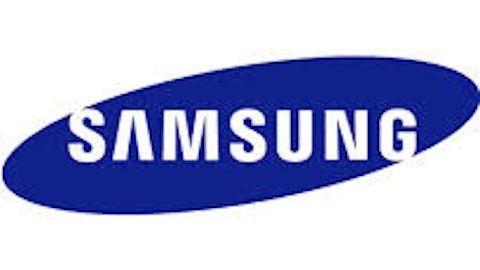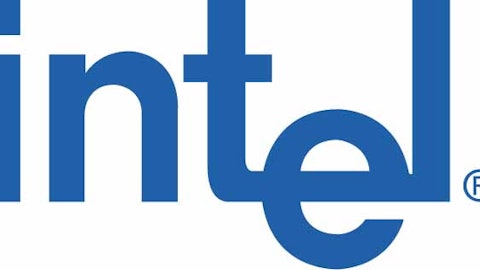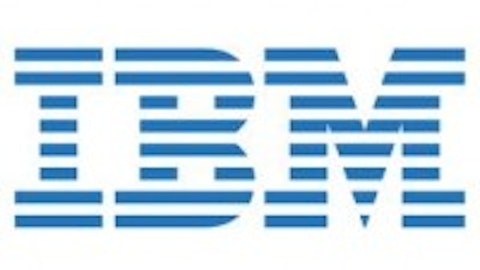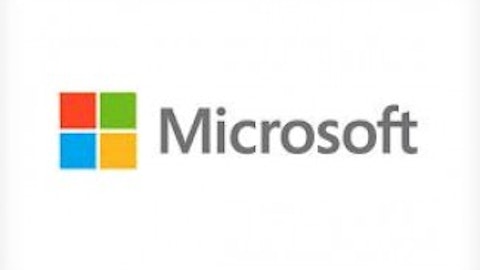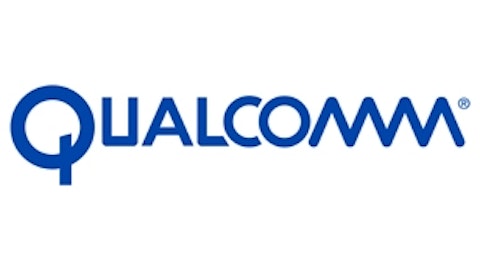For any company, merely possessing the best of technology required to deliver the latest products is not enough until and unless you have takers for those products. As things stand at present, that’s something which is certainly applicable to chip behemoth Intel Corporation (NASDAQ:INTC), as the company is still swimming against the tide in a world that is witnessing a rapid decline of personal computers. As pc shipments continue to move southward for the fifth consecutive quarter, Intel Corporation (NASDAQ:INTC) finds itself way behind with regard to adoption of its processors in mobile devices such as smartphones and tablets.
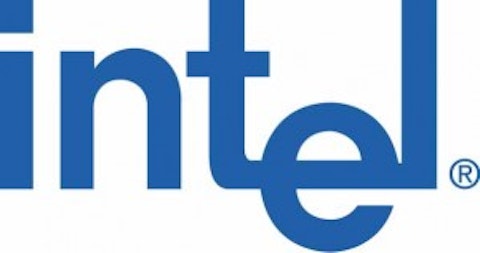
The fact that Intel Corporation (NASDAQ:INTC)’s third quarter revenue projections have stayed behind analyst estimates and that too after four rounds of consecutive quarterly sales declines is certainly a firm indicator of bad times that will continue to plague the company for quite some time to come. And even though competitors such as QUALCOMM, Inc. (NASDAQ:QCOM) and its licensor ARM Holdings plc (ADR) (NASDAQ:ARMH) do have their own share of problems, this ensures that their dominance in the realm of chips for mobile devices is unlikely to be challenged in the near term.
Perplexing but sad
The sad thing about the whole scenario is that Intel Corporation (NASDAQ:INTC) remains unsuccessful in the chips for mobile devices arena, despite having massive advantages over its relatively smaller competitors. This is because it is probably the only chip manufacturing company in the entire planet that has its own production factories, or ‘foundries’ as they are known as in tech parlance. And it’s also way more cash-rich than competitors such as QUALCOMM, Inc. (NASDAQ:QCOM) and NVIDIA Corporation (NASDAQ:NVDA) who incidentally, have to depend on third-party chip manufacturers such as Taiwan Semiconductor Mfg. Co. Ltd. (ADR) (NYSE:TSM) (TSMC) to fulfill their order-based requirements. At the same time, companies such as Taiwan Semiconductor Mfg. Co. Ltd. (ADR) (NYSE:TSM) are no match for Intel Corporation (NASDAQ:INTC), with relation to the latter’s ability to incorporate the latest nanometer technology on its production lines. But, as I said, the problem is that Intel Corporation (NASDAQ:INTC) has few takers for its advanced chip products.
That’s something which again forces us to think about the possibility of a large part of Intel’s production capacity lying idle. While management vehemently denies this and claims that utilization levels continue to be ‘healthy’ without divulging further details, people like me continue to have their reservations.
A lot of good stuff as well
As is evident from my previous article, it’s not as if I’m completely bearish on Intel and have given up all hopes about the company’s revival. In fact, I continue to think that two of the best things to have happened to Intel in recent times comprise its ‘Atom’ line of chips and its new CEO, Brian Krzanich, who has displayed a new degree of transparency and openness in attitude, all of which should be heartening for Intel loyalists. For instance, under his leadership, Intel’s management has scaled down its future plans for massive investment into plants and equipment by a substantial $1 billion, bringing it down to around $11 billion. While that’s certainly discouraging in some respects, it’s also a much-needed realistic stance given as things stand at the moment.
At the same time, the Atom design variations have helped the company to shed its perceived ‘high performance at the cost of high power’ image, a thing which should go down well with mobile device manufacturers and wireless providers, both of which comprise it’s priority target segments.
It’s a chip story
Intel’s entire line up of chips or processors can be broadly categorized into the Core range meant for personal computing devices and the Atom range focusing on mobile devices such as handsets and tablets. While Core processors have much higher profit margins, their demand has dropped sharply in sync with the sinking fortunes of the pc industry.
With Intel realizing the shifting focus of its consumers, the Atom line of chips has gained priority even more in recent times. Enter Silvermont, a variation of the Atom chip design for mobile devices that promises to deliver significantly higher processing performance while consuming a fraction of the power usually required on such chipsets. And with battery life being a prime concern for today’s smartphone and tablet manufacturers, Intel is hoping that Silvermont would be a future game changer.
At the same time, a lot of companies, including Intel, are betting on the prospects of touchscreen computing models as well as laptop convertibles. Keeping that in mind, the company has high hopes for Bay Trail, a cheaper upcoming variation of the Atom line of chips that it claims will bring down the current prohibitively high $500-plus prices of clamshell-style laptops that also have touchscreens, which would automatically lead to higher sales. The same logic applies for Haswell, its much-touted version of the Core microprocessor range.
And while these new line up of chips will be cheaper compared to the earlier designs, Intel is hoping that the sheer volume of sales will more than make up for the expected profit margin shortfall. Added to that, the company’s huge cash pile should also help it to tide over the initial losses. In fact, processor pricing is a key factor which can help Intel take away at least some market share from its more popular competitors.
The competition
Whenever we talk of Intel’s competitors, the one name that inevitably arises is that of QUALCOMM, Inc. (NASDAQ:QCOM). And whenever we discuss QUALCOMM, Inc. (NASDAQ:QCOM), we need to remember that unlike Intel that has been somewhat forced to make a transition from pc-based chips to ones that cater to mobile devices, QUALCOMM, Inc. (NASDAQ:QCOM)’s chips have been made for smartphones and tablets from the very beginning.
This has led to QUALCOMM, Inc. (NASDAQ:QCOM) gaining an early headstart in this direction, a fact which has made it the favorite choice for almost 90% of the world’s mobile device manufacturers, including big names such as Apple and Samsung. At the same time, with over 85% market share, Qualcomm’s chips comprise the industry benchmark for the next generation Long Term Evolution or LTE technology, making it go one up on companies such as Intel.
The ‘ARM Holdings plc (ADR) (NASDAQ:ARMH)’s army’ factor
But then again, Intel’s real competition comes from ARM Holdings plc (ADR) (NASDAQ:ARMH), the company that actually licenses its chip designs to manufacturers such as Qualcomm, and enjoys a phenomenal advantage in the shape of licensing revenues. The very fact that ARM Holdings plc (ADR) (NASDAQ:ARMH) does not manufacture its chips, but rather licenses its designs means that it does not have to maintain ultra-expensive foundries like Intel and also not worry about getting customers for the same.
Intel, however, has tried to do the best thing possible under the circumstances by opening up its foundry production line to external customers, with Altera Corp. being the latest addition, but the overall resultant revenue contribution from this initiative is still negligible.
New beginnings
Another area where ARM Holdings plc (ADR) (NASDAQ:ARMH) is increasingly focusing on recently is to make more low-priced chips to counter Intel’s current dominance in server-enabled ones. However, in my opinion, a very good recent initiative from Intel that might turn the tables on its competitors comprises it efforts to deploy its server chips inside computer-enabled antennas installed at wireless base stations that are, in turn, built by companies such as Ericsson (ADR) (NASDAQ:ERIC) and Nokia Siemens Networks B.V..
While the obvious advantage of this move lies in the fact that it will ease data and service-related congestion to a large extent for wireless carriers, the entire idea would become profitable if they agree to purchase and install such expensive equipment. But, in case they are convinced enough to do so, Intel surely has a first mover advantage in this area.
My foolish takeaway
As is evident by now, the world of technology is a fast-changing one and Intel continues to emit mixed signals as of now. The company continues to be a laggard in the area of developing chips designed for mobile devices, and one single win over ARM Holdings plc (ADR) (NASDAQ:ARMH) where its chips have been included in a particular version of Samsung’s Galaxy range of tablets is certainly not enough to convince investors.
At the same time, the fact that Intel’s management is remaining upbeat about a boost in profits that could be brought about by a possible future economic revival looks like another incorrect assumption to me. Intel is traditionally perceived to be a computing device chip maker, and so it’s more of a perception problem than any other. And the only way to change that would be to get more customers to try out its chips in mobile devices, as well as hope for more success with regard to newer revenue streams.
Intel is certainly leaving no stone unturned, but as they say, the proof is in the pudding. I would recommend holding on to Intel for now, but smart investors would do well to keep a close watch on any company-related developments in the upcoming couple of quarters. Added to that, ARM and Qualcomm’s upcoming earnings releases this week should also help us to study the competition better.
Subhadeep Ghose has no position in any stocks mentioned. The Motley Fool recommends Intel. The Motley Fool owns shares of Intel and Qualcomm. Subhadeep is a member of The Motley Fool Blog Network — entries represent the personal opinion of the blogger and are not formally edited.
The article Should You Take This Company’s Words With A Pinch Of Salt? originally appeared on Fool.com is written by Subhadeep Ghose.
Copyright © 1995 – 2013 The Motley Fool, LLC. All rights reserved. The Motley Fool has a disclosure policy.
